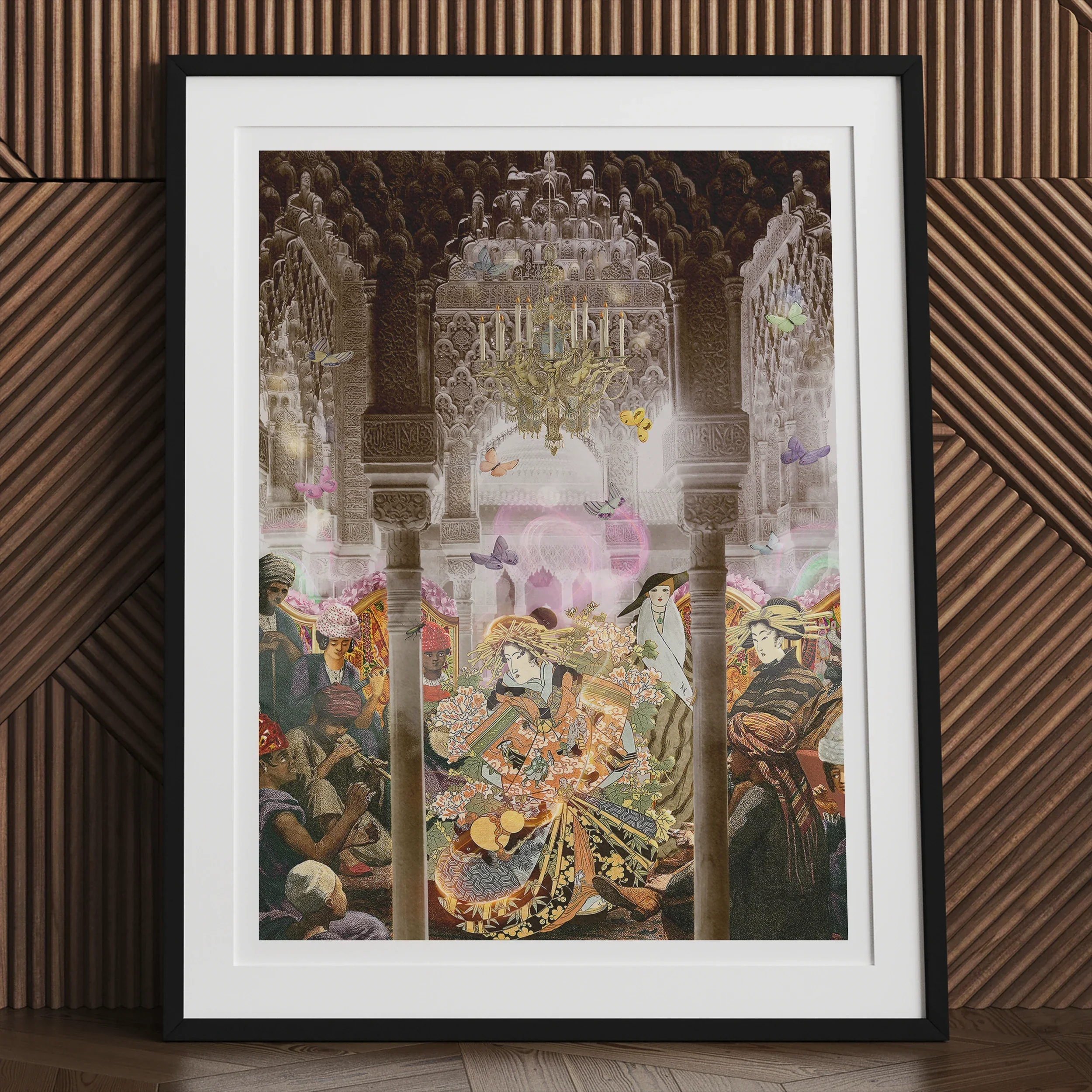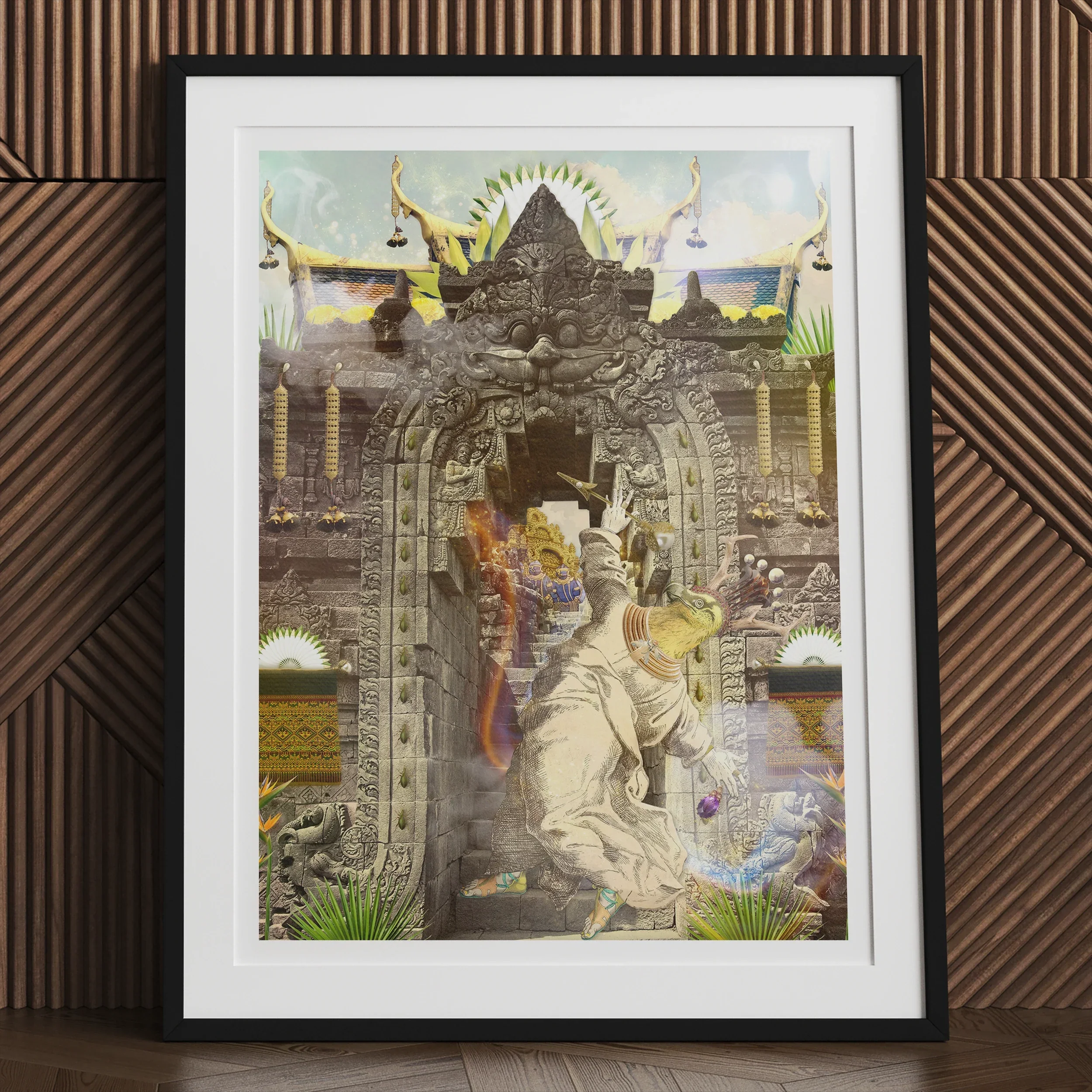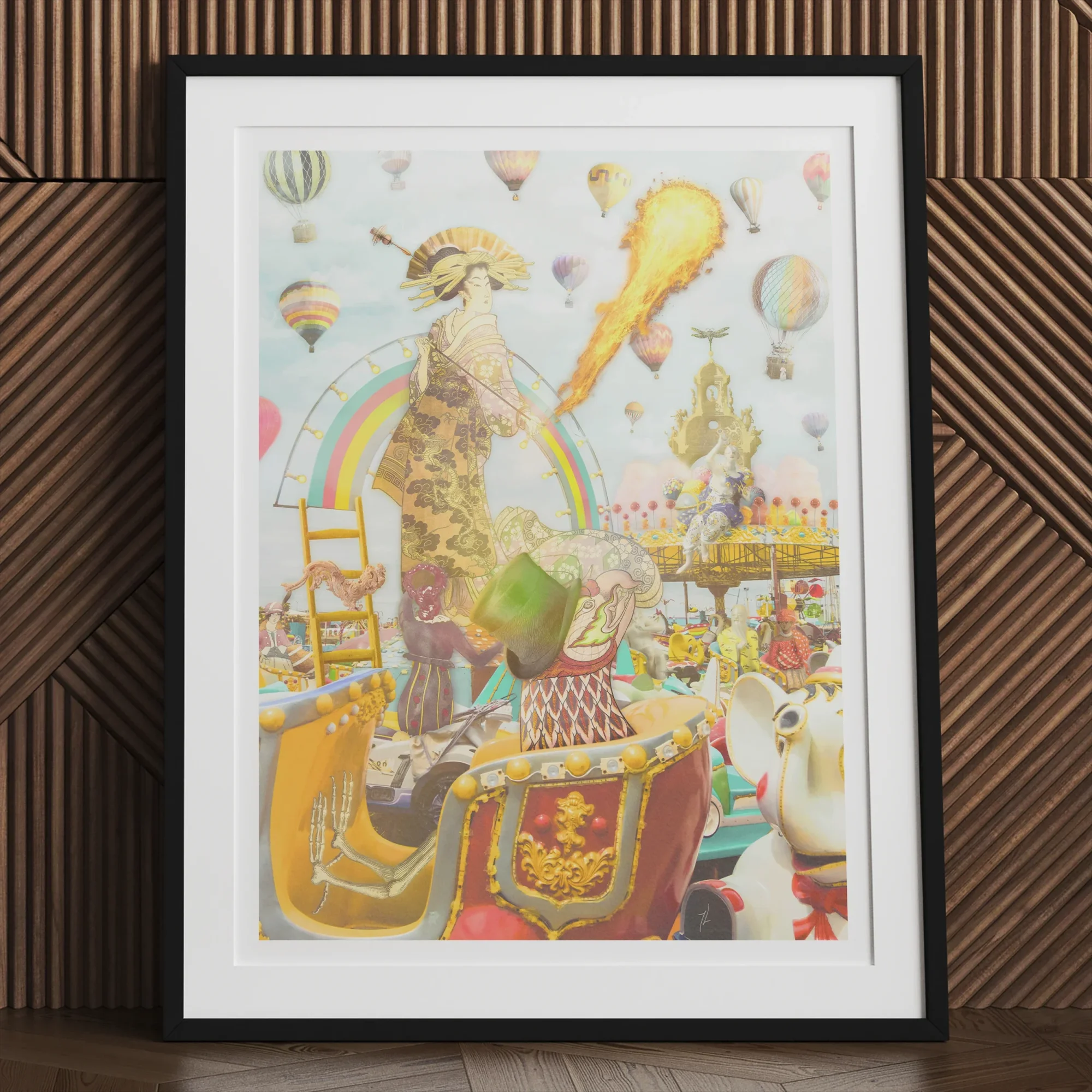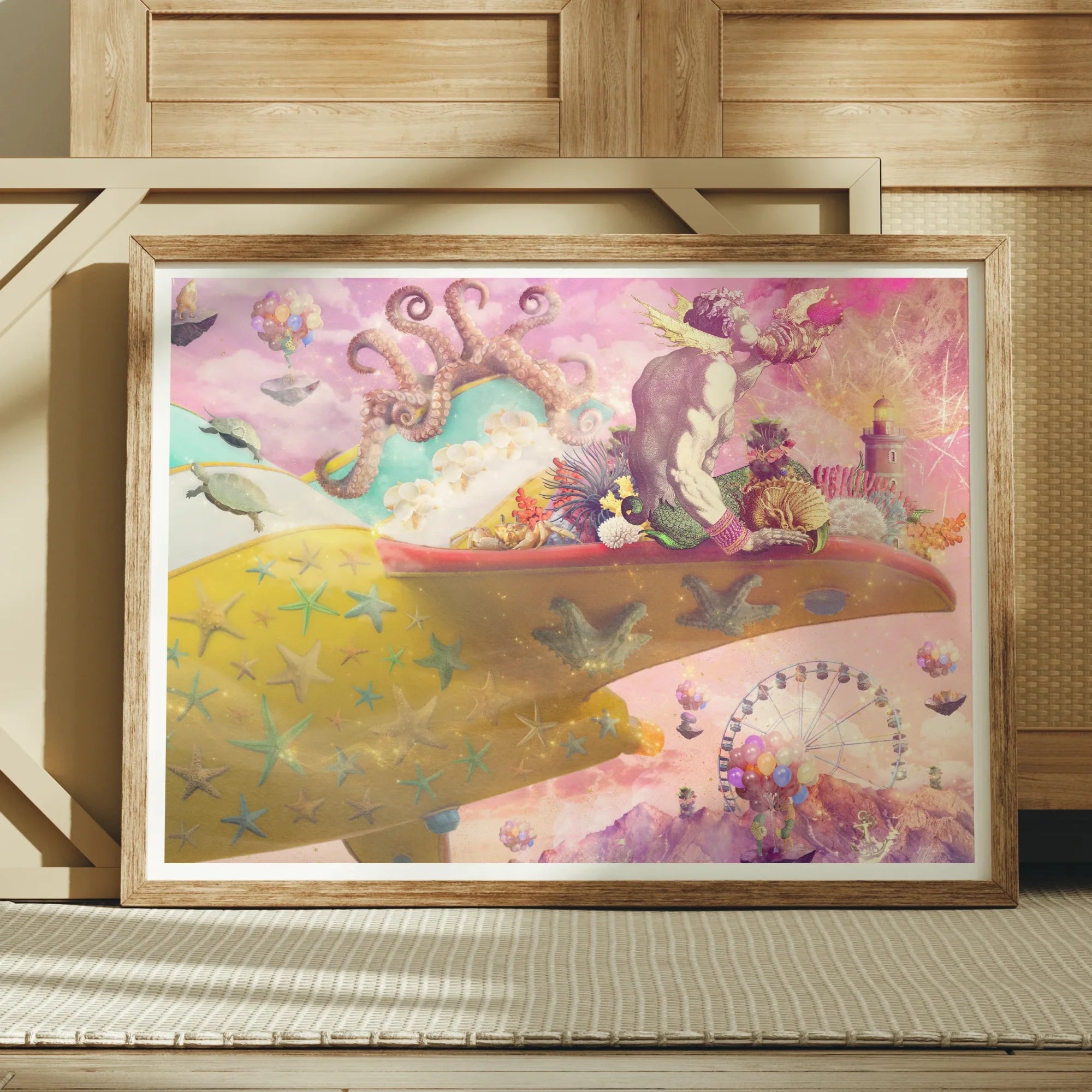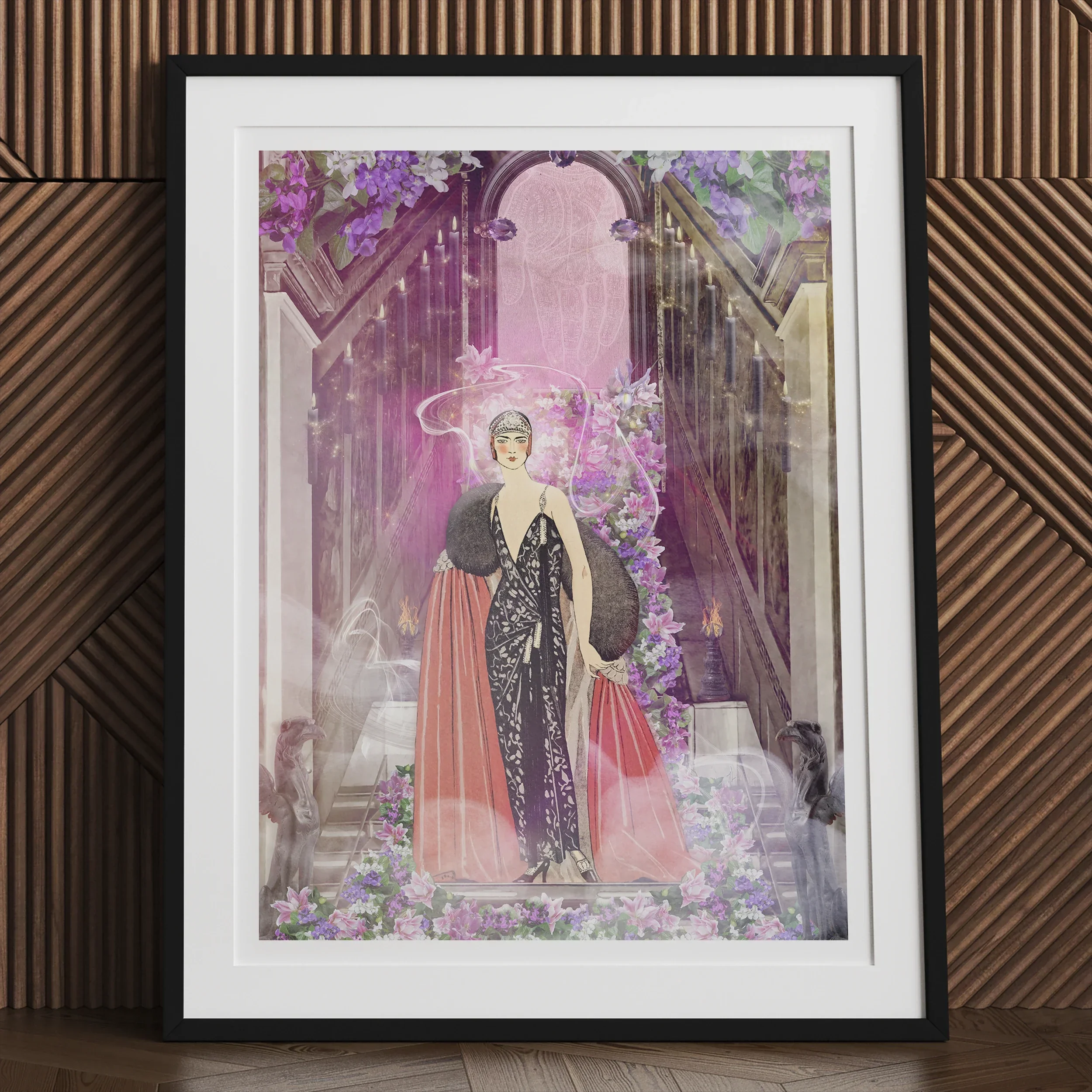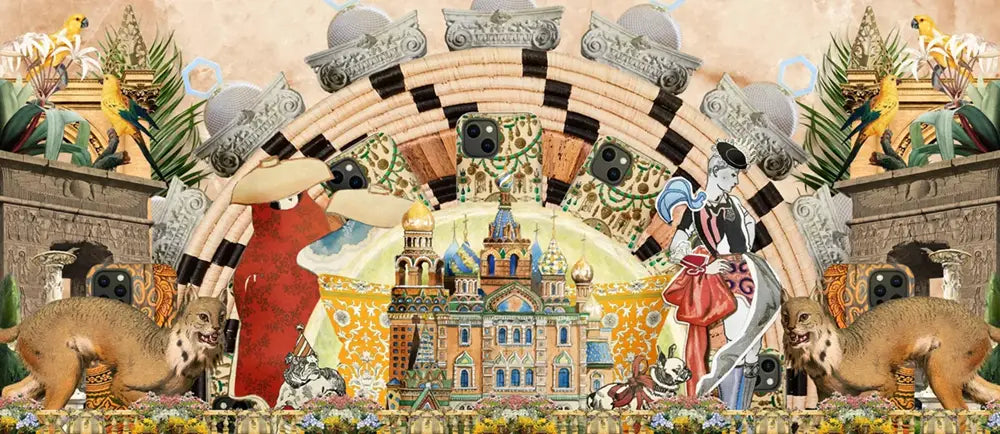In an unassuming atelier in Berlin, stray bits of newspaper once prophesied an artistic upheaval. There, under tungsten bulbs that lent drama to every shadow, the earliest Dadaists discovered how scissors and glue might reflect a world fractured by war. Strips of daily headlines and torn photographs became a radical statement, challenging polite society with a swirl of provocative images. They called it photomontage, but it felt more like magic—splicing time and place into something startlingly new.
Across the Atlantic, a hoarder’s trunk in a dusty New York apartment sat crammed with found objects—rusty hinges, battered postcards, half-burnt matchboxes. To some, this was junk destined for the ash heap of history; to a pioneering artist, it became assemblage, an invitation to see everyday leftovers as shards of memory capable of conjuring the entire sweep of human experience.
Now, from digital collages on social media to the towering museum installations of mixed media virtuosos, the collage tradition lives on—each snippet cut, scanned, layered, or sewn exuding a personal flair. In the tapestry of art history, collage remains a shimmering thread, connecting our collective past to the uncharted possibilities of tomorrow.
Key Takeaways
- Collage is not just layers of cut paper; it’s a portal to modern art’s soul, bridging centuries of avant-garde thinking and everyday creativity.
- Photomontage, born of the Dadaist spirit, has reshaped political dissent and visual storytelling—proving that even scraps of old photographs can spark a revolution in perception.
- Digital collage transcends scissors and glue by harnessing the power of Photoshop and Illustrator, unlocking infinite realms for contemporary artists and graphic designers.
- Assemblage pushes collage into the three-dimensional, inviting us to see buttons, toy soldiers, or driftwood as elements of epic storytelling.
- The fusion of paper, fabric, found objects, and paint—known as mixed media collage—lays bare the limitless potential of this art form, offering both novices and masters a playground of boundless expression.
Collage Through the Ages

Collage, in its broadest sense, comprises a symphony of fragments, orchestrated to form new wholes. From photomontage—which once served as a subversive scream against the tide of prewar Europe—to the meticulously layered fabric collage of modern quilters, each variant of collage is a playground for spontaneous creativity and thoughtful design. Below unfolds a sweeping, in-depth look at collage’s manifold forms, its storied history, the techniques that set it apart, and the luminaries who’ve dared to push its boundaries.
Photomontage: Piecing Together Political Dissent and Surreal Fantasy
No conversation about collage would be complete without shining a light on photomontage. This form, characterized by combining photograph fragments to create wholly original images, lies at the intersection of art, propaganda, and social criticism.
A Revolutionary Spark: The History of Photomontage
Invented by the Dadaists in the early 20th century, photomontage first appeared around 1915 as a biting response to the horrors of World War I. The Dadaists—figures like John Heartfield and George Grosz—employed photomontage to lampoon government propaganda and bourgeois sensibilities. They argued that if the world could be torn apart and reshuffled by war, then art, too, should be torn apart and reshuffled. This same technique carried through the Victorian Era and subsequent movements: Surrealism, post-revolution Russian experimentations, and even the pre-Nazi German art scene.
Hannah Höch and Raoul Hausmann further elevated photomontage, weaving found images of consumer culture with bits of text to interrogate traditional norms. Over the decades, Alexander Rodchenko, El Lissitsky, and Gustav Klutsis introduced new shapes and narratives, always with an eye on the political storms brewing outside their studio windows.
The Seamless Illusion: Photomontage Techniques
At the heart of photomontage is a process of cutting, gluing, rearranging, and overlapping multiple photographs. Artists often go to great lengths to make the composition look seamless—sometimes rephotographing the final piece so that each splice vanishes into the completed vision.
Occasionally referred to as photocollage—especially when typography and brushwork enter the mix—this approach reaches a realm where the borders between imagery dissolve. A digital age extension sees the same cutting-and-pasting done on software like Adobe Photoshop, yet the spirit remains: fuse elements to provoke new meaning or highlight contradictions in the visual language of the everyday.
Titans of Photomontage
Besides the early Dadaists, the roll call of modern practitioners includes names like Laslo Antal, Lance Letscher, and Mimmo Rotella—all forging new frontiers in style and subject. Entirely dreamlike or pointedly political, photomontage today stands as a testament to what can happen when you rip the edges from one reality and glue them into another.
Digital Collage: A New Frontier Beyond Scissors and Glue
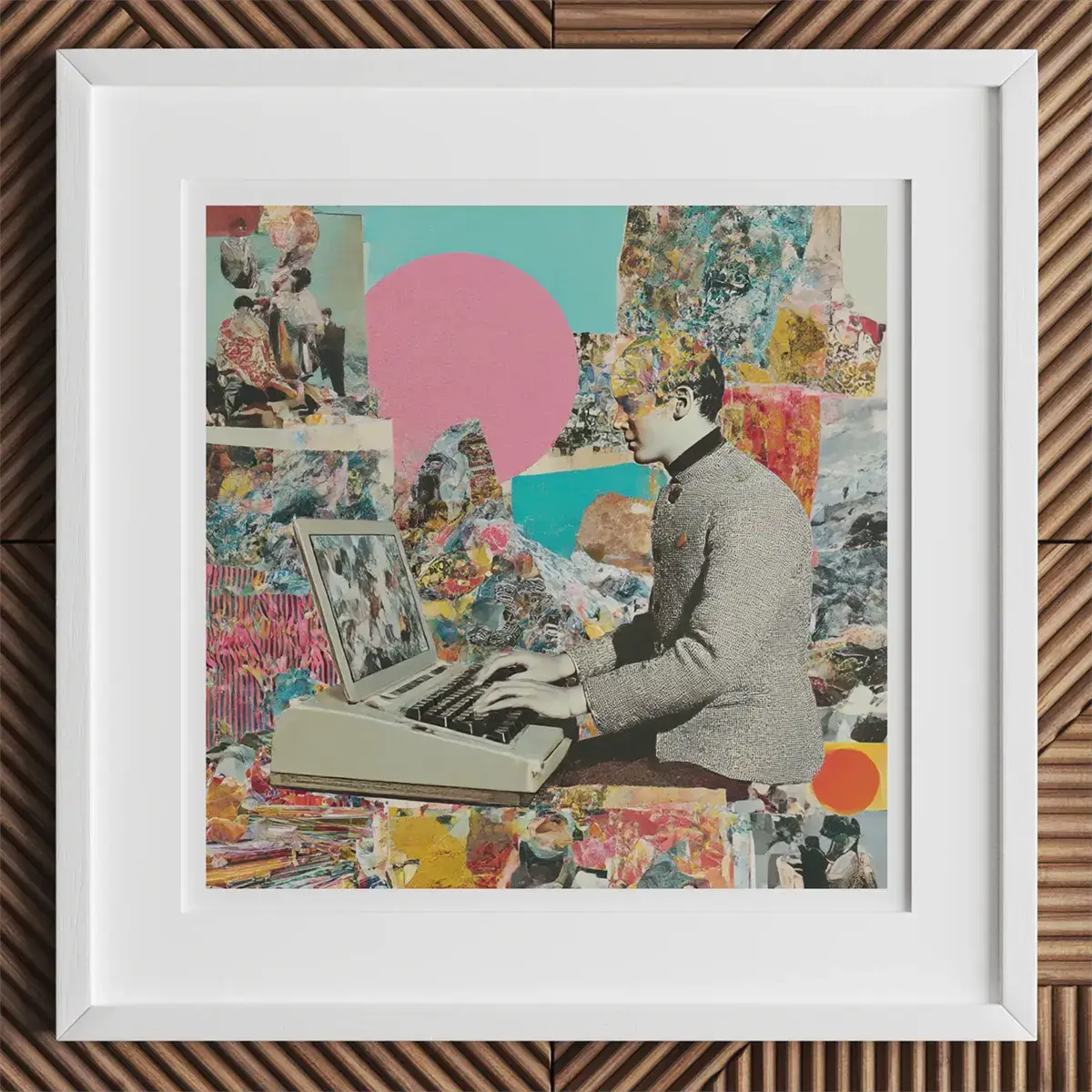
The 21st-century iteration of collage plays out under the glow of laptop screens: enter the realm of digital collage. While its essence mirrors the cut-and-paste tradition, its palette of possibilities expands infinitely via computer tools like Photoshop and Illustrator.
Technological Tremors: The History of Digital Collage
Surprisingly, digital collage has its conceptual roots in older forms. Artists still gather images—often from digitized archives or personal photos—and “layer” them using software. The principle is the same: assemble existing artistic materials into something new. Yet in this digital sphere, complexity knows no bounds. Zoom in thousands of times to perfect an edge; play with hue and saturation; clone, warp, or distort images beyond recognition.
This technology-driven leap means that even novices can access powerful toolsets. Social media platforms and app-based editors offer immediate ways to share a digitally collaged vision with the world, continuing the revolutionary momentum once pioneered by Dada scribblers a century ago.
From Tutorials to Masterpieces: How to Make a Digital Collage
Beginners find plenty of free online tools—Canva, Adobe Express, or simpler mobile apps—to explore layering and color shifts. Professional artists often rely on Photoshop or Illustrator for advanced control, crafting surreal illusions or meticulously splicing images with pixel-perfect precision. Whether layering cosmic backgrounds behind vintage postcards or merging personal portraits with fractal designs, the only limit is the imagination.
Digital Virtuosos
A global cadre of digital collage artists has emerged in recent years. Figures like Marcin Owczarek, Julien Pacaud, and Cyriak conjure alternate realities from everyday visuals, mixing the whimsical with the profound. Others, such as James Dawe or Ernesto Artillo, blend high fashion references with conceptual layering to produce bold statements. Scrolling through social feeds, one can hardly avoid the playful or haunting visions spawned by this digital diaspora.
Assemblage: Three-Dimensional Collage That Bends Reality

Think of assemblage as collage’s deeper, more tactile sibling—one who’s unafraid to sculpt the everyday into uncharted forms. Assemblage relies on objects: a battered doll, a discarded spoon, a sheet of rusted metal, and so forth. The result is something that leaps off the flat surface, a multi-dimensional playground of found objects recast with artistic intent.
Tracing Its Roots: A Historical Look at Assemblage Art
Pablo Picasso was among the earliest to dabble in three-dimensional compositions. Around 1912, his Cubist constructions introduced the idea that an old guitar or a scrap of wood could be rearranged into a new, more profound statement. Fast forward to Kurt Schwitters and Joseph Cornell, whose “boxes” told mysterious, poetic stories from trivial gleanings.
The 1950s and 1960s saw assemblage become a clarion call for anti-aesthetic experimentation. Artists like Jasper Johns and Robert Rauschenberg reveled in messy paint and random objects, forging expressionist reliefs that defied neat classification. Louise Nevelson assembled entire walls of found wooden pieces, painting them uniformly to reveal a symphonic geometry beneath everyday forms.
Gathering the Scraps: How to Create Assemblage
Perhaps the most thrilling aspect of assemblage is the treasure hunt. Old toys, vintage postcards, metal gears—anything can become raw material. The process often involves layering and merging these elements, letting the original connotations slip into new narratives. In rummaging through junkyards or thrift stores, an artist might spot a broken teacup that begs to become part of a swirling commentary on domestic life.
By connecting objects physically—and conceptually—assemblage art extends the collage tradition into real space. It challenges the idea that art must be painted, drawn, or photographed, and it invites the viewer to experience each piece’s tactile presence.
Paper Collage: A Playground of Color, Texture, and Imagination

One of collage’s most classic expressions is the paper collage. The raw simplicity of scissors and a magazine invites even novices to shape a new universe on a single sheet of paper.
“Painting with Scissors”: Techniques of Paper Collage
Henri Matisse famously described paper collage as “painting with scissors,” and for good reason. Artists can cut out shapes from painted paper, or piece together scraps of newspapers and magazine clippings. The real joy arises from the interplay of color, shape, and texture.
-
Cut Out Shapes from Painted Paper: Splash random strokes of bright paint on a page, let it dry, then carve out shapes of your choosing—stars, leaves, swirling patterns. When you overlay them, you create unexpected forms that appear both harmonious and delightfully spontaneous.
-
Layer “Junk” Papers: Even envelope linings or old receipts can become part of your background. Apply a layer of Modge Podge for a glossy finish or a matte medium for subtlety, then stack further elements, perhaps with your own doodles or ink drawings.
-
Tissue Paper Magic: Tissue paper, though fragile, can add lightness or even a stained-glass effect. Combine it with charcoal sketches or watercolors to evoke translucent layers that flirt with the viewer’s eye.
Must-Have Materials
Paper collage typically requires magazines, photographs, fancy paper, tissue paper, and colored cardboard. For a dash of the unexpected, throw in cardboard packaging, or incorporate bits of fabric, leaves, and even food labels. The more whimsical the combination, the richer the final tapestry of shapes and shades.
Paper Collage Luminaries
From Pablo Picasso and Kurt Schwitters to Hannah Höch and Man Ray, countless artists have embraced paper collage as a democratic and radically personal form. In fact, collage’s centuries-old lineage includes works that run the gamut from delicate floral cutouts to jarring political statements about the ephemeral nature of media.
Fabric Collage: Weaving Threads of Imagination

In the hush of a quiltmaker’s studio, scraps of velvet, lace, and cotton squares gather in new mosaic forms, each one layered like a painter’s canvas. Fabric collage merges color, pattern, and tactile sensation for a deeply textural spin on collage.
The Tactile Allure: Techniques of Fabric Collage
Fabric collage mirrors paper collage, but the medium transforms the experience of layering. Artists often rely on cutting and layering, using various adhesives or fusible webs to secure cloth fragments in place. Fine gel medium can help with extra detail, while netting, sheer fabrics, or tulle deliver ephemeral visual effects. Some practitioners adore hand embroidery to emphasize outlines, adding an intimate, handcrafted signature.
Simple Supplies, Endless Possibilities
Many fabric collage artists start with scissors, glue, paper, and, of course, a trove of textiles. Cotton, silk, and felt are common. Others incorporate thread painting—a technique using specialized stitches and cotton threads to “draw” directly on their fabric.
Notable Voices in Fabric Collage
This genre has dazzled audiences in galleries and museums, with artists like Barbara Shaw, Laura Breitman, and Bisa Butler unleashing elaborate quilted narratives. Their pieces can resemble stained-glass windows, with meticulously placed scraps forming radiant portraits or scenes brimming with layered symbolism.
Mixed Media Collage: Where Everything Comes Together

If there is a form of collage that defies neat categorization, it is mixed media. Here, artists invite paint, charcoal, pastels, leftover fabrics, and everyday junk into a single composition. The outcome is a vibrant reflection of multiple dimensions, bridging the playful spontaneity of collage with the texture and depth of painting, sculpture, or printmaking.
The Range of Techniques
The typical foundation for a mixed media collage might be paper or fabric, layered with paint or ink. In the next step, an artist might incorporate found objects—buttons, twigs, flattened bottle caps—anything that deepens the texture or conceptual resonance.
Historically, Pablo Picasso and Georges Braque introduced the world to these multi-layered canvases in the early 20th century, planting seeds that took root across Surrealism and beyond. Today’s mixed media pieces can be monumental displays of paint embedded with shards of mirrored glass, or intimate postcards fused with stencils and pen illustrations.
Mixed Media Maestros
Look no further than Njideka Akunyili Crosby, Anna Dubrowska, Martha Haversham, or David Fullarton for bold glimpses of how paper, photography, text, and paint can unite. Each manages to compress entire worlds of imagery, emotion, and historical reference into a single plane, proving that mixed media can transform even the humblest subject matter into a kaleidoscope of layered meaning.
Mastering the Techniques: A Practical Path to Your Own Collage Odyssey

Choose Materials That Speak to You
At the core of any collage—be it paper, digital, or assemblage—are the elements you gather. Magazines, old photographs, fabric scraps, and more can each have distinctive textural or color properties. Look for common color palettes or unusual shapes to keep your piece cohesive yet intriguing.
Prepare Your Workspace
Set up a clean, flat surface with ample lighting. Gather scissors, glue, a ruler, and any additional adhesives. Consider a cutting mat to preserve your table and to help you measure out precise lines. Organize your chosen elements by size or color—think of them as the building blocks of a dreamlike puzzle.
Cut, Arrange, Rearrange
Use scissors or craft knives for different levels of detail. Experiment: place a photograph corner over a bright scrap of fabric, or layer tissue paper for a glowing effect. Nothing is final until you glue it down. This playful approach of shifting shapes around fosters happy accidents.
Embrace Layering and Overlapping
Placing elements on top of each other introduces texture and a sense of depth. If you want to push further, incorporate paint or pastels between layers to unify the composition. Overlapping different mediums—like translucent materials atop bold patterns—can unlock visual surprises that captivate the eye.
Step Back for Final Touches
When you’ve glued your last scrap, pause. Glance from a distance. Maybe you see a spot that begs for a dramatic swirl of ink or an accent of metallic foil. These finishing touches can nudge your collage from interesting to mesmerizing.
The Joys and Trials of Collage: What Sets It Apart

Creating collage art is both liberating and challenging:
Liberation
Collage invites playful experimentation. It welcomes the unpolished or the accidental, granting new life to what might otherwise be discarded. Found objects pulse with history, making each piece personal and time-honored.
Challenge
Composing a visually balanced piece from jumbled fragments demands an acute sense of composition. Collage can also be time-consuming—those who craft large-scale pieces might spend days (or weeks) trimming and layering. Delicate materials (like tissue paper) require care in both handling and adhesion.
Yet these very hurdles sharpen an artist’s skill in storytelling. When successful, a collage conveys layered narratives, weaving personal or political significance into the surface of the piece.
Presenting and Preserving Your Masterpiece

Even the most dazzling collage begs the question: How to ensure it stands the test of time?
Framing
A high-quality frame with acid-free backing can shield your collage from dust, fingerprints, and environmental damage. If you’ve assembled paper elements, consider UV-resistant glass to thwart fading over the years.
Hanging
Place your artwork away from direct sunlight and moisture. Make sure you use sturdy hardware—picture hooks, wire, or secure mounting—that suits the weight of your piece, especially if it’s a heavier assemblage with metallic or wooden objects.
Archival Storage
If you must store it, wrap your collage in acid-free tissue or paper, and keep it in a cool, dry location. Fluctuating temperatures and humidity can cause papers to buckle or adhesives to weaken.
A Final Collage of Possibilities

Though collage originated as an avant-garde disruption to established art forms, it has grown into a global language of creativity. From the propagandistic punch of Dada photomontage to the dreamscapes of digital composition, from the dimensional wonders of assemblage to the cozy fabrics of textile-based collages, each form addresses a slightly different human impulse—the impulse to gather broken or scattered fragments and make them whole.
Above all, collage remains a triumph of invention. It echoes the experiences of our modern world, reflecting how daily life itself is an overlapping mosaic of events, images, and fleeting impressions. To pick up scissors and glue or fire up a digital editing suite is to become an archivist of your personal or cultural moment—selecting, cutting, layering, and revealing hidden connections.
So the next time you spot a pile of old photographs, or find your device brimming with digital images, ponder that earliest Dada question: What unlikely beauty might emerge if I dare to reassemble this world?







